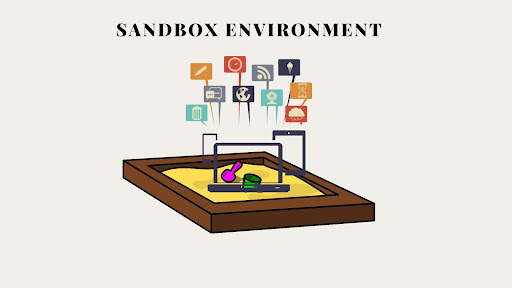A sandbox environment is a secure test environment where, even if something goes wrong, it won’t directly harm your host machines, operating systems, applications or data. It provides a controlled, isolated environment where you can safely test changes or run untrusted code.
Sandbox environments are enclosed and separate from your production environment, in order to ensure that failures don’t affect other fully working applications and data. That said, a sandbox environment is similar to a production environment. The major difference is that the changes you make in a sandbox do not affect the production or live environment.
Advantages of Using a Sandbox
Using a sandbox environment offers several benefits. By providing a safe and isolated environment for testing and experimentation, sandboxes can help reduce risk, increase productivity and improve security.

Use Cases of a Sandbox Environment
- A sandbox environment allows you to test new software applications and updates without affecting the live environment.
- Sandbox environments help you identify and isolate potential security threats and vulnerabilities before they can cause damage to the live environment.
- Using a sandbox environment means you can experiment with different configurations and settings to see how they affect the system.
- Within a sandbox environment, you can replicate issues or bugs reported by users in a controlled environment in order to troubleshoot and resolve those issues.
- Sandbox environments allow you to collaborate with other teams or stakeholders without affecting the live environment.
Advantages of a Sandbox Environment
Using sandbox environments offer various advantages, including the following:
Reduces Risk of Errors and Disruptions
When you use sandboxes, you reduce the risk of errors and disruption to the production environment since you are working in an isolated environment.
Reduces Testing and Development Costs
Sandboxes offer cost savings since creating a lightweight sandbox may be cheaper than provisioning a full duplicate production environment for testing.
Improves Testing Efficiency
Sandboxes enable developers and testers to work more efficiently by providing a dedicated environment for testing and experimentation.
Improves Software Security By Isolating Malicious Code
Sandboxes can isolate untrusted code or processes, which limits the potential impact of vulnerabilities or malicious behavior to the main system. This helps strengthen security and identify vulnerabilities in software and applications.
How to Set Up a Sandbox Environment
Setting up a sandbox environment depends on your operating system. For example, Linux operating systems have namespaces, while Windows and MacOS have built-in sandbox features in their respective operating systems.
To set up a sandbox environment in Windows 11/10, follow these steps:
- In the taskbar, search ‘Turn Windows Features on or off’ and click on it.
- Select ‘Windows Sandbox,’ then click ‘OK’
Windows will install the necessary components for Sandbox to run. Once the process ends, you can run the Windows Sandbox from the Start menu. Note that if you cannot find Windows Sandbox, you may need to check if you have enabled virtualization for your machine.
In addition to the built-in sandboxes, VirtualBox is a popular virtual machine for Windows and macOS that you can install on your computer. VirtualBox allows you to create multiple virtual instances and sandbox your applications and code.
Frequently Asked Questions
What is a sandbox environment used for?
Sandbox environments are used to test new software, updates and configurations without impacting live systems.
How does a sandbox improve software security?
By isolating code and applications from the production environment, sandboxes can help identify vulnerabilities and prevent security threats.
Can I set up a sandbox environment on Windows?
Yes, Windows 10 and 11 include a built-in Windows Sandbox feature that can be enabled via system settings.





